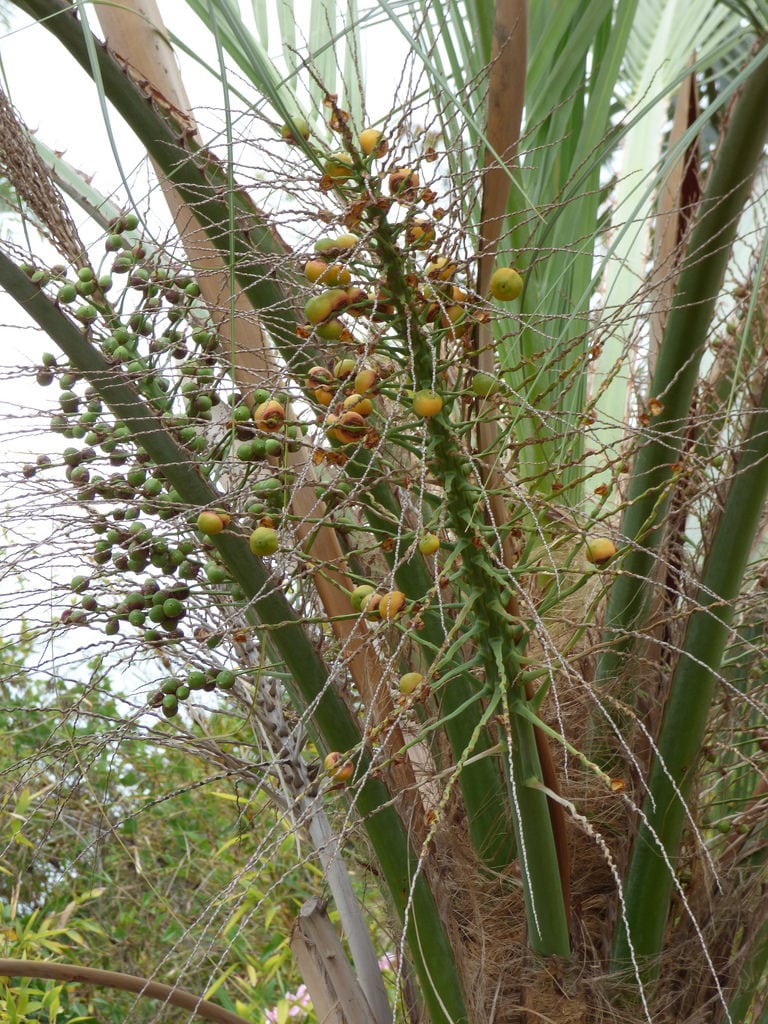Pindo Palm Propagation: Learn About Propagating Pindo Palms


Pindo palms are classic "feather palms" with the attendant wing-like fronds. Propagating palms is not as simple as collecting a seed and planting it. Each species needs a different pre-treatment before planting the seeds. Pindo palm trees are no exception. Germinating pindo palm seeds requires some patience and know how to get the process correct and achieve a baby palm. The following article outlines how to propagate a pindo palm with the steps needed for success.
Propagating Pindo Palms
Pindo palms are relatively cold tolerant plants. They do grow from seeds well, but the seed needs to undergo several stringent conditions, and even then, seed is slow to germinate. It can take nearly 50 weeks before germination occurs in the best conditions. Pindo palm propagation may be challenging, but the end result is a wonderful new plant. Fresh, ripe seed is the most viable and easy to germinate. Fruits should be bright orange when ripe. You will need to remove the pulp, soak, and sterilize prior to planting the seeds. Cut off the flesh to remove the pit inside. This may be irritating to some people, so wear gloves when handling the pulp.
How to Propagate a Pindo Palm Seed
You will first need to soak the pit. This helps soften the exterior leading to further success in germinating pindo palm seeds. Soak pits for seven days, changing the water daily. Then dip seeds into a 10 percent solution of bleach and water and rinse thoroughly. Fungal and bacterial diseases can mostly be dispensed with this method. The removal of the endocarp is the next part of propagating pindo palms. Some suggest this is not necessary, but the hard covering on the outside of the pit or the endocarp is difficult to crack and can result in increased germination times if not removed. Use a pair of pliers or a vise to crack the endocarp and remove the seeds. You may opt to soak these or simply prepare a soilless mixture of perlite, vermiculite, or other material that has been moistened. You may also use sterilized potting mixture. Knowing how to propagate a pindo palm is just half the battle. Proper planting, site, and care are also crucial to this finicky plant's germination. Pindo palm trees in the wild can take up to two years to germinate naturally. Create a pre-drilled hole and gently place the seed therein, barely covering it with moist medium. Keep seeds warm but out of direct sunlight. Temperatures of 70 to 100 degrees F. (21-38 C.) are best. Keep the containers moderately moist, never allowing the medium to dry out. Now the hard part. Wait. It can take quite a while but don't forget your seeds. In time, you will enjoy baby pindo palm trees, quite a feat and a labor of love.
Sign up for the Gardening Know How newsletter today and receive a free copy of our e-book "How to Grow Delicious Tomatoes".

Bonnie Grant is a professional landscaper with a Certification in Urban Gardening. She has been gardening and writing for 15 years. A former professional chef, she has a passion for edible landscaping.